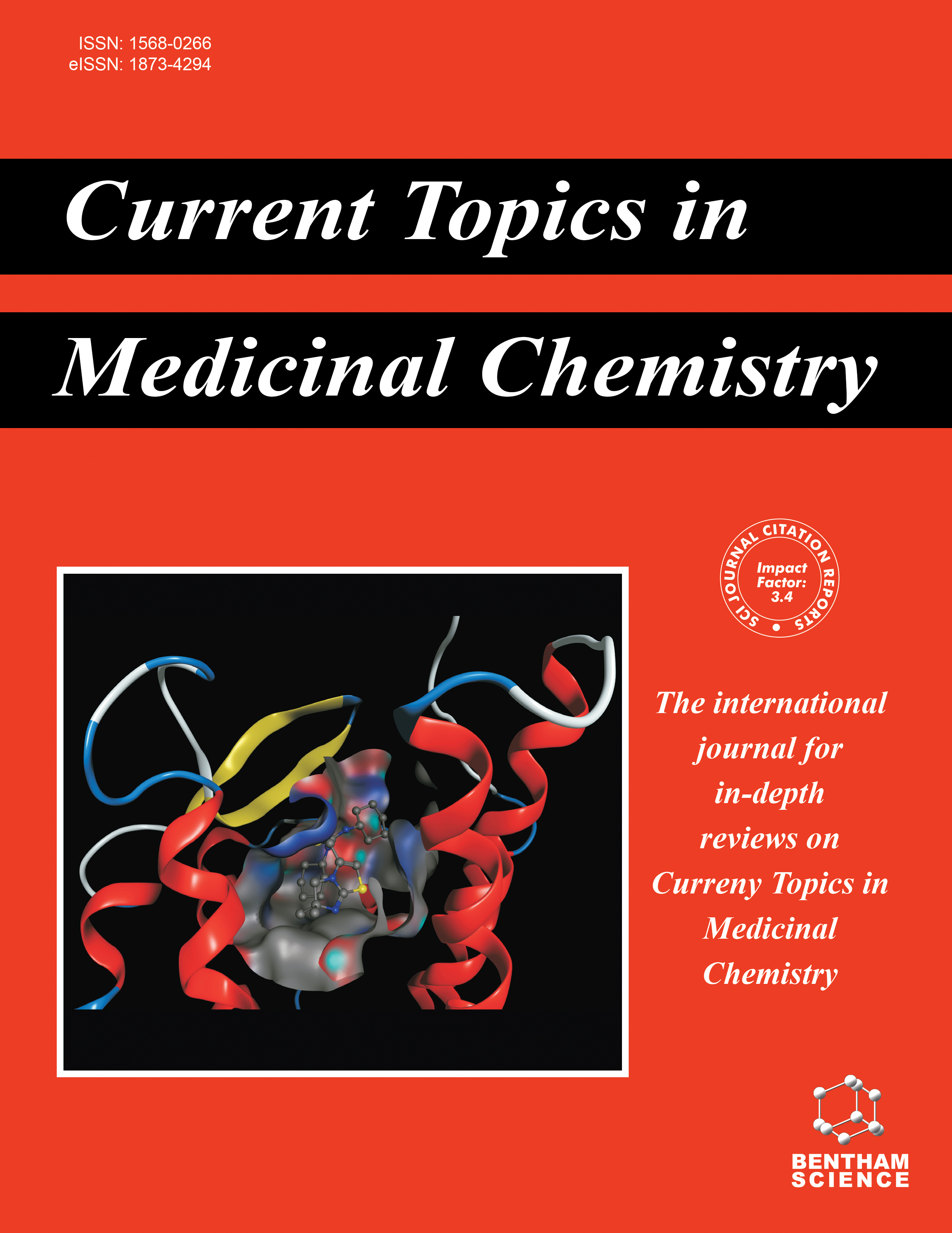-
oa Editorial [Hot topic: Metal Chelation (Guest Editors: Paul V. Bernhardt & Des R. Richardson)]
- Source: Current Topics in Medicinal Chemistry, Volume 11, Issue 5, Mar 2011, p. 482 - 482
-
- 01 Mar 2011
- Previous Article
- Table of Contents
- Next Article
Abstract
Complexes of essential metal ions (e.g., iron, copper, zinc) as well as exogenous metal ones (platinum, ruthenium, gold) have found many pharmacological applications. The best and most well known example is the cancer chemotherapeutic cisplatin, cis-[Pt(NH3)2Cl2], that has made a significant impact in the treatment of a number of tumors e.g. small cell lung cancer, ovarian carcinoma etc. In this volume of Current Topics in Medicinal Chemistry, we have brought together experts in many fields to cover a broad spectrum of topics examining the use of metals and their complexes for a variety of chemotherapeutic applications. These subjects include novel cancer chemotherapeutics, radiopharmaceuticals, anti-diabetic agents and anti-inflammatory drugs. In addition, chelators that bind intracellular metals can be used to treat a variety of diseases, including iron- or copper-overload disorders and also potentially some neuro-degenerative diseases. In each case, characterising the reactivity of the complexed metal formed within the cell is essential to understanding its function. The first review in this issue is a product of our own research focus and examines the design and use of novel iron chelators for the treatment of cancer. While many chemotherapeutics have been designed to target other essential nutrients e.g. folate, very little attention has been invested to specifically interfere with the metabolism of iron which is necessary for DNA synthesis and a plethora of other functions. Recent work has clearly demonstrated that novel thiosemicarbazone ligands are effective at inhibiting tumour growth and are well tolerated, demonstrating the great potential of this strategy. Donnelly and Ma then present a review assessing the use of peptide targeted 64Cu-labelled diagnostic agents for positron emission tomography imaging of cancer cells. The authors describe that the bio-distribution of such radiotracers are influenced by the design of the construct, namely the chelate group, linker and targeting peptide. Recent advances in the field of peptide targeted 64Cu-labelled radiopharmaceuticals are discussed and examples are reviewed as case studies in the optimisation of radiotracer design. Transition metal based anti-cancer drugs are next discussed in a thorough analysis on the subject by Janice Aldrich-Wright and colleagues. Since the discovery of the anti-cancer properties of cisplatin, a vast family of platinum compounds have emerged. Their modes of action vary with structure and reactivity of the complex; some coordinating to DNA, while others act as intercalators that disturb DNA replication etc. This review also covers a wide variety of other transition metal complexes that have shown promise, including ruthenium, palladium, gold and titanium (which like platinum, are exogenous metals). Complexes of copper, vanadium and cobalt are also included in the review which illustrates that the diversity of approaches taken in the treatment of cancer reflects the different characteristics of these metals. The role of metals in disease is not confined to cancer. Jones and Badrick provide an interesting assessment of the potential use of chelation in halting the progression of neuro-degenerative disorders such as Alzheimer's disease, Parkinson's disease and Creutzfeldt-Jakob disease. The disruption of copper, zinc and iron homeostasis in the brain is linked with these medical conditions. For example, there is some evidence in Alzheimer's disease that copper is re-distributed to become associated with β-amyloid plaques. Chelators and copper complexes offer a potential strategy to restore the proper balance of copper metabolism and hopefully prevent the pathology. In a review written by Peter Lay et al., the authors point out that most metal-based pharmaceuticals are pro-drugs and their chemical structures, properties and bio-distribution may change markedly upon administration. By utilising examples from their own laboratory, these authors describe the use of X-ray absorption spectroscopy and X-ray microprobe techniques to provide information on the bio-transformation and bio-distribution of metal-containing drugs. Applications of these techniques to anti-cancer, anti-diabetic and anti-inflammatory drugs are discussed. These relatively new techniques are, for the first time, providing insight into issues such as toxicity and efficacy through accurate mapping of the cellular distribution of the metal or metalloid. Stephen Ralph reviews a novel and highly interesting application of metal complexes in the battle against cancer cell proliferation. Telomeres are single-stranded DNA at the ends of chromosomes and are continually degraded with each cell division until the amount lost reaches a critical value, triggering apoptosis. Cancer cells may avoid programmed cell death by replenishment of their telomeric DNA through elevated telomerase activity (a DNA polymerase). Telomeres are also known to assemble into structures known as DNA quadruplexes, and in this form, telomerase activity is inhibited, rendering the cancer cell vulnerable to apoptosis. The review explores metal complexes that interact with telomeric DNA and which induces the formation of quadruplex DNA as a novel approach to inhibiting cancer cell proliferation. Finally, Bernhardt and co-workers examine the topic of iron chelation. This review covers the first and most intensively used iron chelator in the clinic, the bacterial siderophore, desferrioxamine, to the recently developed and synthetic, orally-active iron chelator, Exjade®. From analysis of this spectrum of ligands, it is clear that many approaches have been investigated in the quest for small molecules that are capable of reversing potentially fatal iron overload disorders in humans. Recent developments in the chemistry and biology of potential new iron overload drugs are reviewed, examining both synthetic compounds and natural products capable of chelating and mobilising excess intracellular iron. We trust that this issue of Current Topics in Medicinal Chemistry provides an illuminating overview of some interesting facets currently being explored in the implementation of metals in the development of novel and effective chemotherapeutics.


